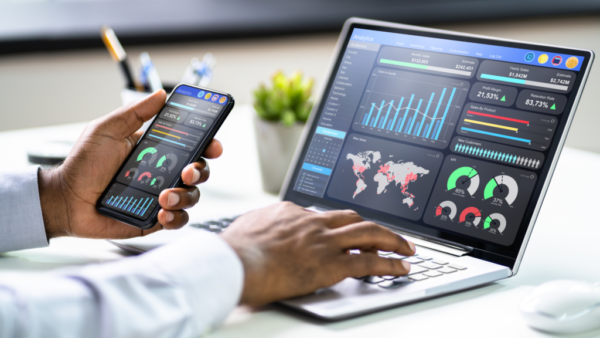Introduction
It becomes very important in a rapidly changing business scenario to have the use and interpretation of data. A powerful app for centralizing and visualizing important metrics such as the Core App Dashboard is going to power users to make well-informed decisions and maximize their productivity. It is more important now than ever before that organizations need consolidation of where they can monitor key performance indicators and the status of projects in real time. It is user-centric, providing nothing but easy navigation and allowing for flexibility in customization with direct access to the most important information. The instinctive layout and thoughtful design values enable specialists, be it scheme bosses or experts, to modify their dashboards in agreement with their exact needs. This has not only better user appointment but also effectual work flows to make sides effort on what truly materials.
Key Features
Centralized Data Management
The Core App Dashboard allows for centralization of information and therefore holds all your information coming from several sources in one place. This is quite important for professionals operating under vast data since it offers one stop or a common platform from where metrics and KPIs can be monitored. This means that such a dashboard enables quick rendering for project managers, in one glance, team progress, deadlines, and budget use. Equally, data analysts can use such an opportunity to benchmark real-time data against the current trend. The layout is rather simple, thus freeing the time spent switching from one application to another, and users can focus on proper decision-making and optimization of workflow. Core App Dashboard helps in productivity and process smooth running as it provides a clear view of relevant information.
Customizable Widgets and Panels
One of the most attractive strengths of the Core App Dashboard is that it can enable users to have widgets and panels customized according to their needs. The user can modify their dashboards so as to include what is related to them in their roles. For instance, in the case of a project manager, it would attention on lists of tasks, charts of routine of teams, and limits that are upcoming; on the other hand, the relevance for a data analyst would be in data conceptions and trend graphs.
This level of personalization is tolerated so that each one may create an experience unique to the individual and ensures that carries the elements of one’s workflow. Furthermore, with drag-and-drop functionality, users can easily move widgets around so they quickly get back to the task at hand without being distracted by information not related to what they are doing. It maximizes efficiency and productivity by allowing the user the chance to be an architect of his own custom dashboard configuration.
Real-Time Data and Notifications
This provides real-time data, considered the foundation for the Core App Dashboard, which also permits providing the user with actual minute-by-minute updates on tasks, metrics, and performance. It is enormously useful in fast-paced environments where decisions have to be taken in an infinitesimally quick time span. Moreover, the dashboard offers a notification system that routinely lets users know about any informs, such as the meeting of particular milestones within the project or a change in the limit for completing sure tasks. Users can set up their notifications to go off or come across their screens only when substantial updates occur, thus stopping disturbing continuous alerts. Such balance enables users to be learnt without losing track of their work.
Layout and Design
Visual Hierarchy
The dashboard heavily uses the visual hierarchy to help users try to understand and navigate through an interface. So, “Core App Dashboard reduces important information at the top or center of the screen and marginal information in less viewable areas. In the context of attention guiding, size, color, and position are very crucial. Imperative metrics or warnings are going to pop out more with greater fonts and brighter colors. Clear and uncluttered layouts allow for simple scan ability so that the intricate data can be digested by users easily. Thus, careful arrangement enhances usability and boosts user fulfillment since it simplifies the procedure of interpretation.
Color Scheme and Branding
There is a lot of impact of the color scheme applied on the Core App Dashboard in terms of the readability as well as the user experience. With a good color combination, it may be possible to distinguish multiple data sets and indicate trends nicely. For example, using red for the critical activities and green for the completed milestones is a form of intuitive comprehension of project statuses. Furthermore, the color scheme of the dashboard can be customized to be in coherence with the company’s branding, which has been fortifying the unification of visual identity. This kind of personalization adds yet another layer to complete the user experience profile.
Main Components
Header Section
The header section of the Core App Dashboard offers access to these tools and updates continually for users. This area usually holds the application’s logo, a user’s profile picture, a search facility, and alert notifications. Keeping such significant elements at the top of the screen will enable the user to quickly check for updates or changes without being dislodged from their workflow. It will be effective if the user can easily locate data or even tasks rapidly through search functionality.
Customizable Widgets and Panels
The Core App Dashboard is a prevailing collection of available customizable doodads and panels that let the most applicable information to be exposed at any given time. Widgets are a building hunk of the dashboard, showing metrics through charting and graphing as well as tasks and timelines. Users can configure these widgets to most suit their workflow so that they are able to tap into real-time updates on the most important data. This not only enhances the user experience but it also supports better decisions by keeping relevant information right up front.
Security and User Management
User Authentication
As far as security is concerned, for any application that involves sensitive data, it is paramount, and the Core App Dashboard employs advanced authentication protocols for all its users in protection of all this information safely. Commonly, these contain password login and 2FA, whereby access is allowed by an authenticated person only. Role-based access control is another critical functionality wherein the administrators can define certain permissions for users based on their respective roles. For example, complete access to all information and settings may be accorded to a project manager, while some reports, data sets, and such may be required to have restricted access only to team members. This protects sensitive data and at the same time aids in easy collaboration between team members.
Data Encryption and Compliance
The Core App Dashboard makes use of strong data encryption to ensure information about users recorded there remain secure at both rest and in transit. This level of protection ensures the requirements fulfilled by some of the regulatory compliance standards such as GDPR and HIPAA-the sensitive information of users is not accessible to any unauthorized party. Updates on protocols concerning security help eliminate emerging threats, which basically supports the strength in the data security of the dashboard.
Conclusion
It is a light, helpful, and user-friendly tool that enhances productivity and decision-making in a data-driven environment. In fact, it can handle data management in a customizable widget with real-time insights that provide users with the necessary resources for managing tasks and projects. It is based on thoughtful design principles: the visual hierarchy, color schemes, and responsive layouts to ensure that there will never be a bad view in any device. And of course, great security measures keep sensitive information secure while helping team members work more efficiently. Looking ahead, the Core App Dashboard will only get better with potential capabilities for advanced AI analytics, deeper third-party integration capabilities, and further customization options-all the things that guarantee adaptability to the moving landscape of data management and decision-making.





